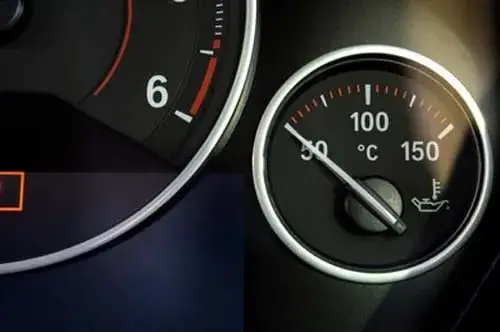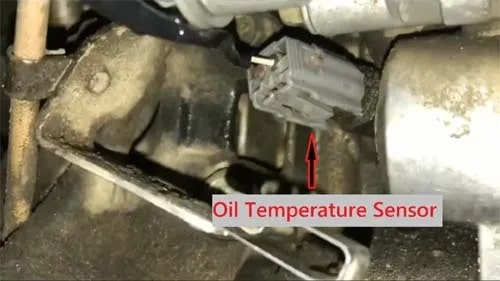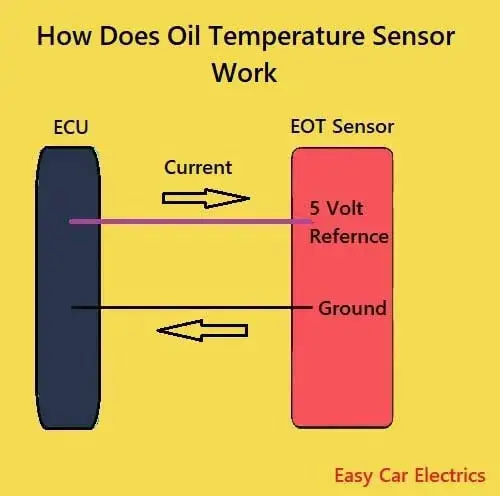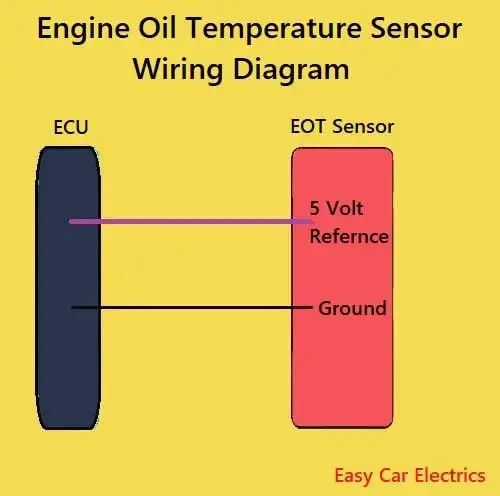
A car engine typically has several sensors that monitor different conditions. The oil temperature sensor is one of these sensors. Its job is to measure the temperature of the oil and send this information to the car’s computer. The computer uses this information to adjust the fuel mixture and prevent engine damage.
Engine oil is the most important element for engine lubrication and keeping the engine cool. The engine oil gets hot due to usage and it is necessary to have a temperature sensor to determine the temperature of the engine oil to protect the engine from damage.
In this powerful guide, you will learn what the engine oil temperature sensor is, its location, functions, working, wiring diagram, and symptoms.
Related Post: Types Of Compressor Oil
Engine Oil Temperature Sensor

The Engine Oil Temperature (EOT) sensor or the thermometric oil temperature sensor is the sensor, which is used by the electronic control unit of the car to get the readings of the temperature of the car’s engine oil and sends the reading to the car ECU.
It also displays the results (the temperature of the engine of the car) to the driver. In the case of a car engine operating at very high temperatures, the engine of the car might get damaged.
Through these sensor readings, the driver can know when the temperature of the engine is high so that the driver turns the car’s engine off until it cools down to normal temperature.
The engine oil temperature sensor senses the temperature of the engine’s oil and sends the reading to the electronic control unit (ECU) of the car.
The electronic control unit utilizes this temperature reading from the engine oil temperature sensor to adjust the fuel injection in the combustion chamber of the car in a way to regulate the engine oil temperature.
The Engine Oil Temperature sensor’s input decides the timing and quantity of fuel required for an efficient engine starting during all temperature conditions.
Fuel timing and quantity are controlled by the ECU to compensate for oil viscosity changes during temperature variations and to ensure that adequate torque and power are available.
The oil temperature sensor is a resistor-based (thermistor) sensor, which changes its resistance according to the change in temperature of the engine’s oil.
The oil temperature sensor of the car is a thermistor mostly with a negative temperature coefficient and changes its temperature according to the temperature of the engine oil.
Its resistance decreases with the increase in temperature of the engine’s oil and vice versa. It also notifies the driver through the meter installed in the dashboard, so he could stop the car to cool down.
Oil Temperature Sensor Location

The Engine Oil Temperature Sensor of the car is located under the hood of the car. In different cars, the engine oil temperature sensor could be located in different places in the engine compartment.
The most common place where the engine oil temperature sensor is placed in the car is in the engine block or the cylinder head. It could either be mounted on the cylinder head or the engine block.
Related Post: Where Is Engine Coolant Temperature (ECT) Sensor Located
Oil Temperature Sensor Function
The main function of the EOT Sensor of the car is to warn the driver of the car overheating, so he may take the measures necessary and let the car cool down before driving again as it could be very harmful to the health and life of the engine of the car.
The EOT sensor is a negative temperature coefficient thermistor. The EOT sensor of the car changes the resistance with the change in temperature of the engine oil.
Hence, when the engine overheats, the resistance will become less, and the voltage of the signal will be higher. This detection of a higher temperature of the engine than the normal temperature will be displayed to the driver to protect the passengers, the driver, and the car itself.
Related Post: 11 Parts Of Car Starter Motor & Functions
How Does Oil Temperature Sensor Work

The Engine Oil Temperature Sensor is a thermistor (thermal resistor). The thermal resistor changes its resistance with changes in the temperature sensor. The tip of the sensor is immersed in the engine’s oil. The EOT sensor senses the temperature of the engine oil.
The electronic control unit of the car sends the signal to the EOT Sensor; the EOT sensor of the car receives this signal and processes it according to its resistance, which is based on the temperature of the engine oil, and sends it back the signal to the ECU.
The EOT sensor has a negative temperature coefficient, meaning that with the rise in temperature of the engine’s oil, the resistance of the thermistor decreases.
Hence, when the car is overheated, the resistance of the EOT sensor of the car decreases and sends a signal of higher voltage back to the electronic control unit (ECCU) of the car.
The ECU then decodes the signal and adjusts the injection of the fuel in the car’s combustion chamber. This reading of temperature is also displayed to the user on the dashboard, so the driver can wait for the car’s engine to cool down.
Oil Temperature Sensor Wiring Diagram

The engine oil temperature sensor has two wires.
- 5-volt Reference Wire
- Ground Wire
The sensor gets both of its wires from the ECU.
The Engine oil Temperature sensor takes a 5-volt reference from the car’s Electronic Control Unit (ECU). The voltage signal is sent back (by ground wire) to the ECU by the EOT sensor after applying the resistance.
This voltage received by the ECU helps the ECU determine the change in temperature of the engine’s oil and hence the heat absorbed by the oil from the engine.
The ECU examines the voltage received back to it by the oil temperature sensor; this voltage signal received back will tell the ECU about the current temperature of the engine’s oil.
Related Post: Wire Camshaft Position Sensor Wiring Diagram
Oil Temperature Sensor Symptoms
The Engine Oil Temperature Sensor of the car is one of the most crucial sensors in your car. It is mandatory for the proper running of the car.
You must look out for the symptoms and immediately get the EOT sensor of the car checked when any of the following signs appear.
- When the reading of the engine oil temperature displayed on your monitor is faulty
- If the reading of the sensor does not change in any situation
- When the fuel economy suddenly drops
- When your car is surging or misfiring
- When there is a strong burning smell from the engine of the car
- When your car emits black smoke
- When there is jerking in your car when driving
Related Post: 9 Symptoms Of A Bad Engine Coolant Temp (ECT) Sensor
Sign Up

